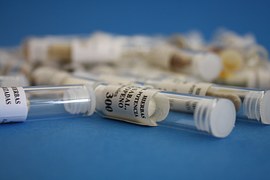Over decades, India has been recognized as a largest producer of generics drugs. It has been a major supplier of generics to developed economies, like the U.S and is well-known for reverse engineering techniques to build cost effective and therapeutically effective generics.
1. Abolishing product patents
In 1947, India’s pharmaceutical market was vastly controlled by foreign players accounting for 90% of the total drug sales.
With the Patents Act, 1970, Indian government disregarded product patents which allowed Indian companies to reverse engineer and copy the drugs patented by foreign companies as long as they employed a different production processes than that of the patent owner. This allowed the Indian companies to legally sell the patented drugs at a fraction of a cost in India.
This initiative by the government lowered the entry barrier of the industry thereby supporting local players to take control of the Indian pharmaceutical market from the MNCs.
2. Reintroducing Product patents
In 2005, India amended its patents law to be in accordance with the TRIP obligations. This meant that product related patents were reintroduced in India. This effectively ended the golden era of protection for Indian pharmaceutical companies. Now, companies manufacturing a patented by product by any kind of process would have to pay a royalty to the patent owner.
The amendment made reverse engineering or copying of patented drugs illegal after January 1, 1995. The Act allowed for only two types of generic drugs in the Indian market: off-patent generic drugs and generic versions of drugs patented before 1995.
This increased the focus of Indian companies to manufacture drugs which are off patent and don’t come under the radar of this act.
3. Inherent Competencies and Low-cost Manufacturing Capabilities
India is capable of providing labor at 50-55 % reduced cost than the west. The cost of bulk drug production in India is 60% lower than the west.
India is well known for its reverse engineering skills, competitive pricing and rich pharmaceutical talent. Indian pharmaceutical companies function on a much lower profit margin than their Western counterparts. Labor costs are between 50.0 per cent to 55.0 per cent cheaper than in the West. India can produce bulk drugs at a 60 per cent lower costs than the west. Setting up a production plant in India is 40% lower in costs than in the west.
The cost of bulk drug production in India is 60.0 per cent lower, while the cost of setting up a production plant in India is 40.0 per cent lower than in the West.
However the focus of Indian Pharmaceutical industry is slowly but surely shifting more towards R&D, clinical research and developing more patented products than ever before. This is because of significant competition in the generics drug market which is highly fragmented. It is becoming difficult for the Indian companies to differentiate without many patented products.

Jitu is Co-Founder of Mantras2Success. He has Engineering & MBA degrees to his name, along with 10+ years of corporate work experience in fortune 500 companies. Jitu is passionate about improving the careers of the modern day professional. He would be reading books or watching documentaries if not fulfilling his dreams at Mantras2Success.


